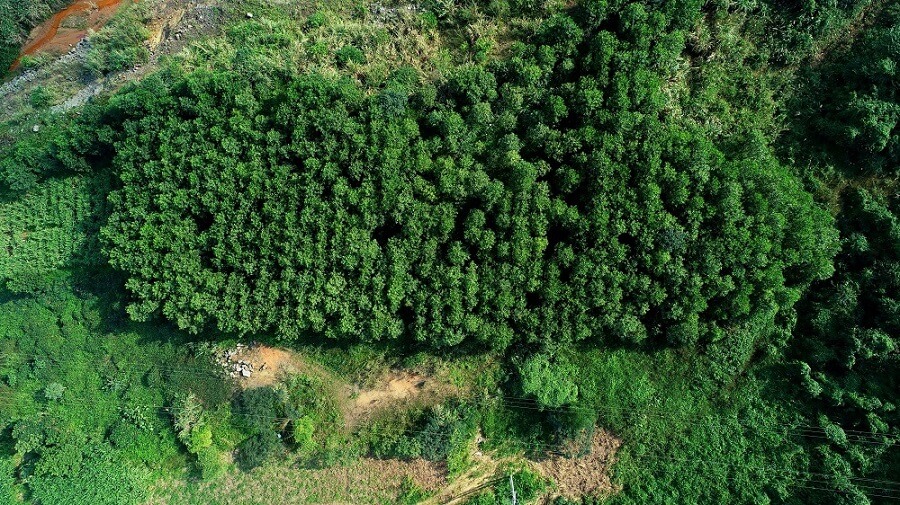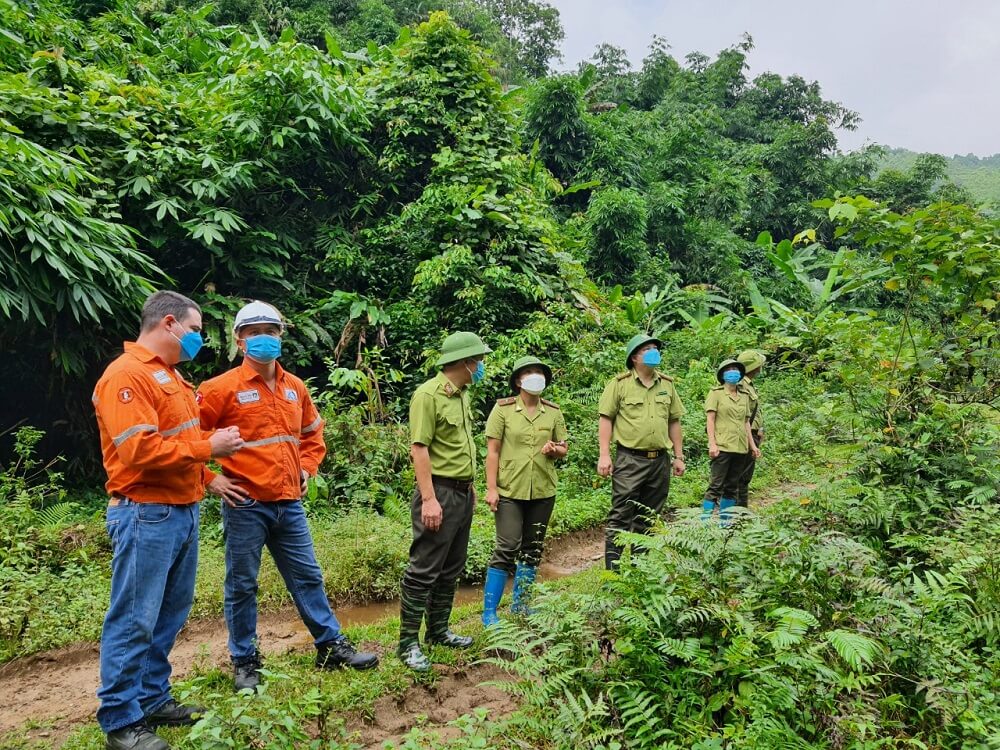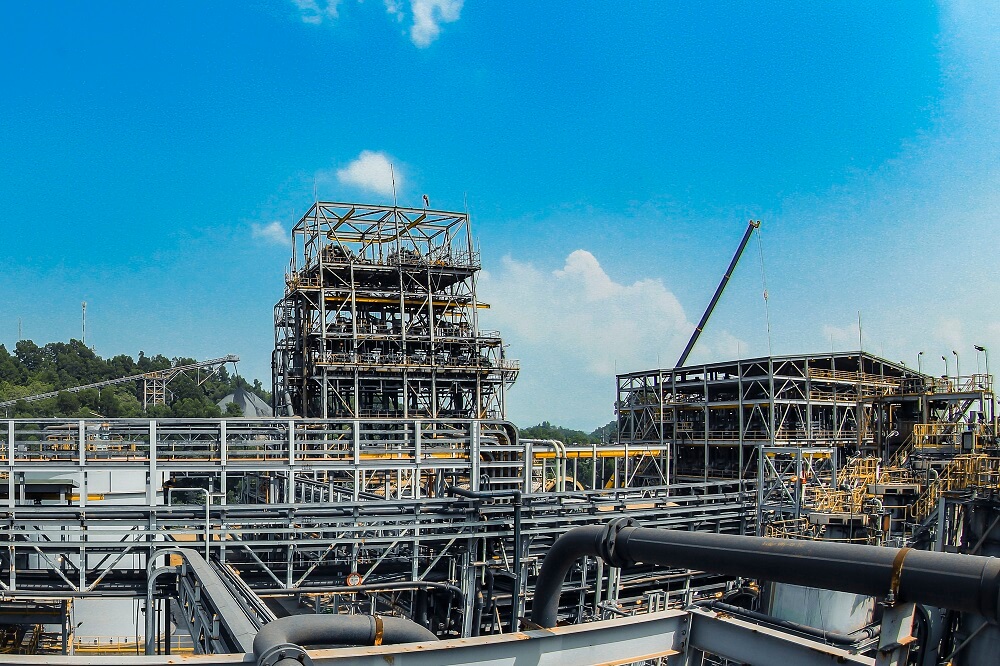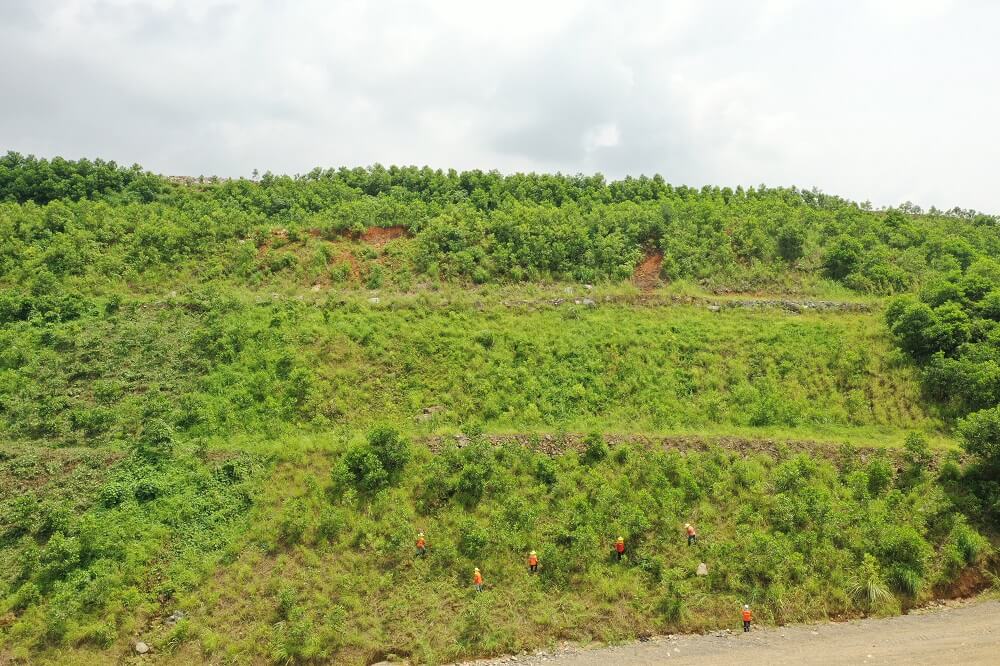The world is experiencing resonance effects at the worse level and scale than ever from the three disasters including the Covid-19 pandemic, climate change and natural resource scarcity, leading to major consequences on many aspects of the current and future life. The last five years have been the “warmest” period recorded on earth, especially the year 2020 that witnessed the highest level of carbon dioxide in our atmosphere. For the fight against the worsening climate change is not just lip service, the movement towards carbon neutrality is an extremely critical action to commit to and strive for from now on. With a mission of a Vietnamese enterprise leading the global high-tech materials industry, Masan High-Tech Materials Corporation (hereinafter referred to as “Masan High-Tech Materials”) has clearly determined its strategy and set out ambitious goals in carbon neutrality and climate protection. Afforestation is among the initiatives to neutralize carbon that the company has been taking and will continuously promote in the future.
Carbon neutrality is an internationally recognized method for human beings to be more environmentally responsible for the unavoidable CO2 emissions in daily life as well as in business activities. Simply put, carbon neutrality means that one ton of emitted CO2 will be balanced by an equivalent amount being removed at a different place. This can be implemented through calculating carbon credit to invest in projects of minimizing CO2 emissions all over the world. That is the quickest way to reduce CO2 emissions in the atmosphere and the only way to neutralize carbon.
At Masan High-Tech Materials, we highly focus on the efficient use of conventional sources and renewable sources for self-generated energy, which are the key leverage for the company to realize its carbon neutrality goal. Based on the mutual frame of sustainable development objectives by the United Nations and the Paris Agreement on climate change, Masan High-Tech Materials had its initial approaches to the journey towards carbon neutrality as follows.
Reviewing, calculating and re-auditing greenhouse gas inventory
Recently, the company has reviewed, calculated and re-audited the inventory of greenhouse gases from energy consumption in accordance with the guidelines of the Intergovernmental Panel on Climate Change (IPCC) framework with a direct range (coal, gasoline and oil consumption) or indirect range (power consumption). In the coming time, the company will continue to complete the greenhouse gas inventory in other fields such as wastewater treatment, waste disposal and even negligible emissions such as printing.
Developing solar farm at Nui Phao mine
Green power and clean energy are necessary solutions to improve neutral carbon quality. Currently, the company has worked with several partners to seek development opportunities and install a solar farm at Nui Phao mine. This project has great significance and feasibility to be implemented in alignment with the company’s energy consumption strategy in the next 5 to 10 years.

Calculating the amount of carbon absorbed from environmental restoration and rehabilitation activities and the area of reforestation in Dinh Hoa District, Thai Nguyen Province
Since the Nui Phao tungsten-polymetallic mine (in Dai Tu District of Thai Nguyen Province) was exploited, the company has planted dozens of hectares of Acacia trees under the environmental restoration and rehabilitation program, which not only minimizes the impact of pollution sources from mining and mineral processing activities but also acts as important carbon absorption sinks.
In addition, the company will monitor to calculate the amount of carbon absorbed from the area of reforestation in Dinh Hoa District, Thai Nguyen Province. Since 2018, the company has deposited VND1.5 billion to the Thai Nguyen Forest Protection and Development Fund for reforestation of 26.7 hectares of forests to compensate for land clearance to implement Nui Phao Project. The Thai Nguyen Forest Protection and Development Fund has used this amount of money to plant 50 hectares of protective forest and special-use forest at Bao Linh, Dinh Bien and Phu Dinh communes in Dinh Hoa District, Thai Nguyen Province. The trees planted and protected in that forest area are Cinnamon, Erythrophleum fordii, Chukrasia and other regenerated woody plants, which are currently growing and increasing canopy very well. The company has coordinated with the Thai Nguyen Forest Protection and Development Fund to collect information, calculate the carbon absorption capacity through planted forest areas, and also work on researching investment cooperation programs on afforestation in the future in Thai Nguyen Province. Based on initial calculation, the amount of cumulative CO2 from the planted forest areas under the annual plan on environmental restoration and rehabilitation and the areas of reforestation in Dinh Hoa District is around 5,736 tons. Carbon offset by planting as a bridge solution needs to be focused on towards the goal of carbon neutrality and climate balance.

The idea of investment in reforestation to sell carbon credits
A carbon credit is a permit issued by the government or any other regulatory agency that allows the credit holders to emit greenhouse gases (converted to CO2). Each credit is equal to 1 ton of CO2 equivalent, and carbon credit can be exchanged or traded amongst participants joining the carbon market. Accordingly, the forest carbon credit is determined by calculating CO2 absorption capacity in the atmosphere through the forest biomass. Vietnam is identified as one of the potential countries in terms of selling forest carbon credits.
On November 22, 2020, Vietnam signed an agreement with the World Bank’s Forest Carbon Partnership Facility (FCPF). Vietnam is expected to sell approximately 10.3 million tons of CO2 through REDD+ program (Program of reducing greenhouse gas emissions from deforestation and forest degradation) for the period of 2020 – 2025 in six provinces in the North Central region. According to the calculations, Vietnam can sell up to 50 million forest carbon credits and earn trillions of Vietnamese Dong every year. Up to now, Vietnam has not had any investment project for conducting business, trading in forest carbon credits from REDD+ program between a foreign enterprise with a Vietnamese organization/ individual. Thus, the Government approved Quang Nam Province to implement a pilot project on trading in forest carbon credits from the REDD+ program with the pilot period from 2021 to 2025. The success of the pilot project will bring huge opportunities to other provinces in Vietnam.

Currently, Masan High-Tech Materials is closely monitoring the development and implementation progress of the carbon credit market in Vietnam, as well as completing the legal framework to orientate this activity so that the company will be ready to take the lead in participating in the carbon credit market, contributing to the common goal of reducing greenhouse gas emissions and protecting the environment.
Masan High-Tech Materials is the global leader in providing advanced tungsten materials used in key industrial sectors such as electronics, chemical, automotive, aviation and aerospace, energy and pharmaceutical industry with its own production facilities in Vietnam, Germany, Canada and China, servicing the world. As the largest manufacturer of mid-stream tungsten products outside of China, the company has two research and development centers in Germany and Vietnam, and it is currently operating the Nui Phao polymetallic mine and a state-of-the art processing plant in Thai Nguyen Province. Masan High-Tech Materials is also a globally significant producer of Fluorspar and Bismuth.









